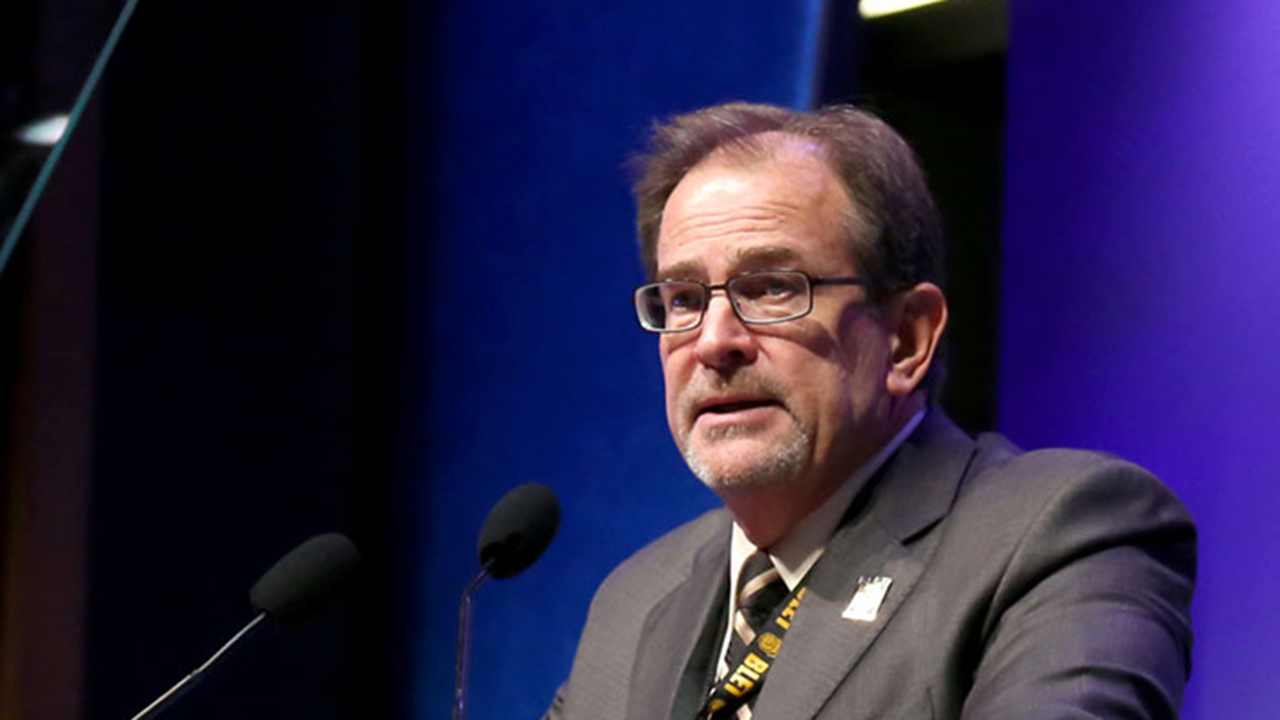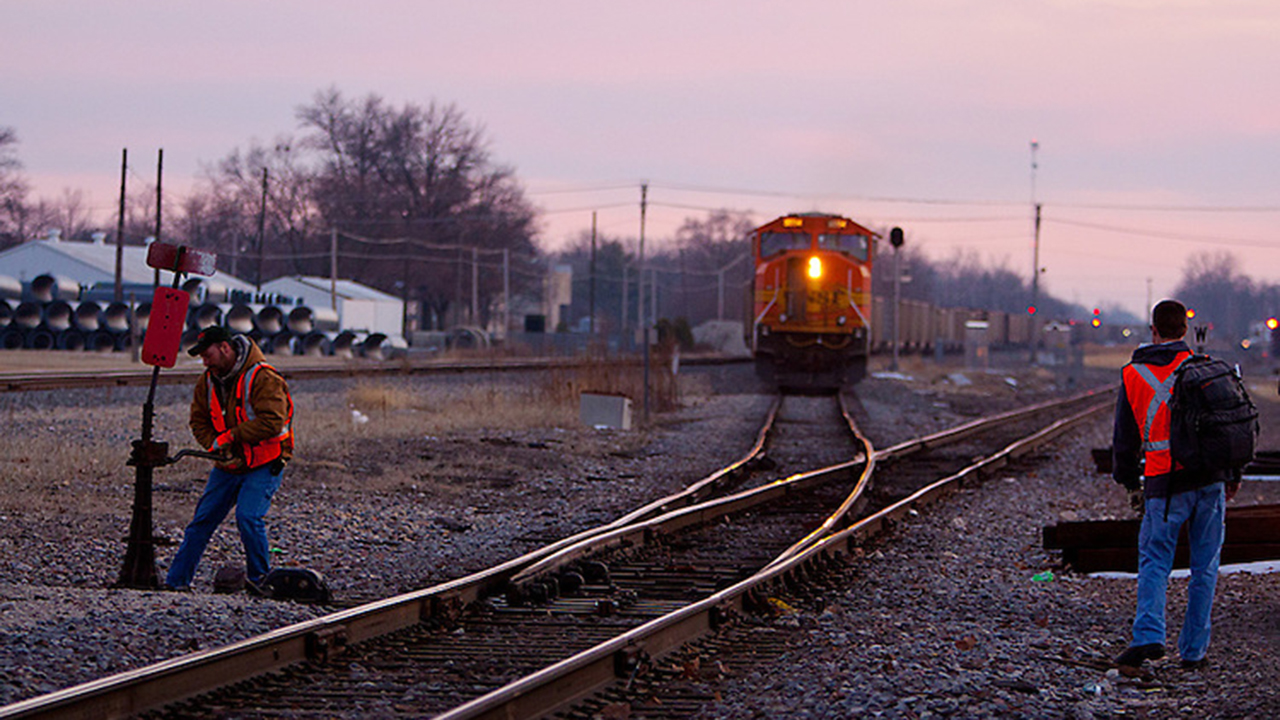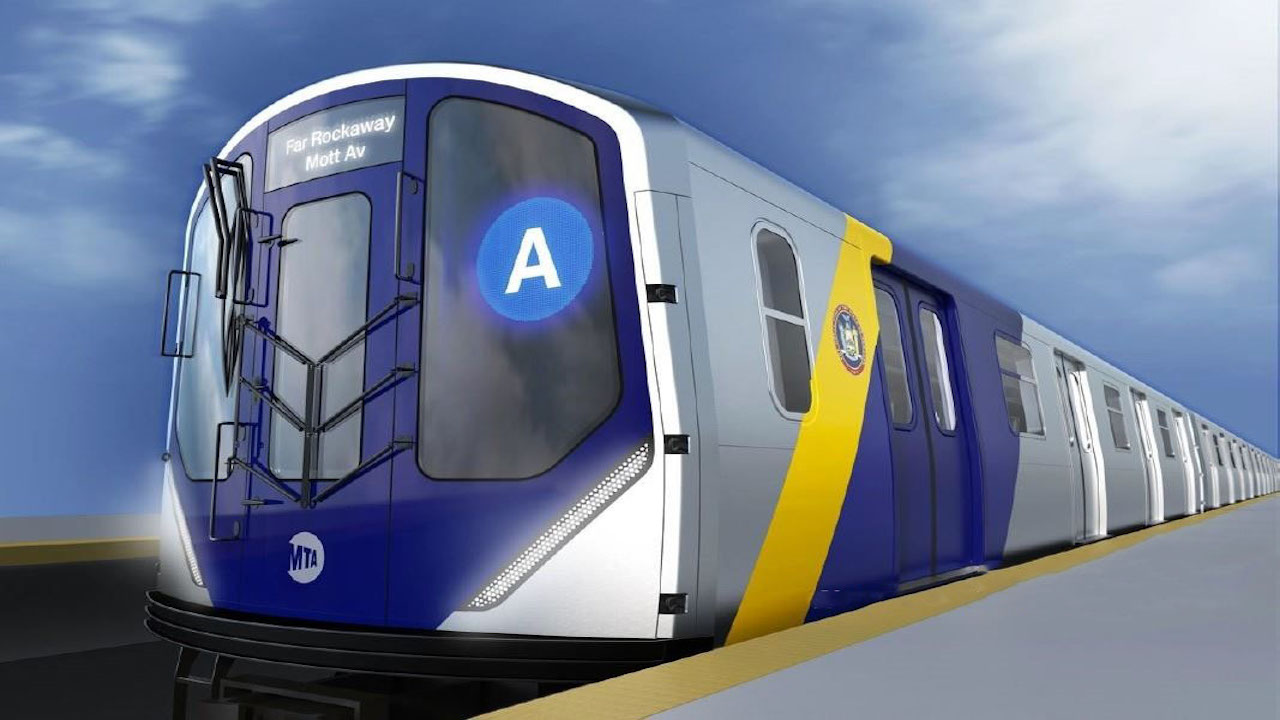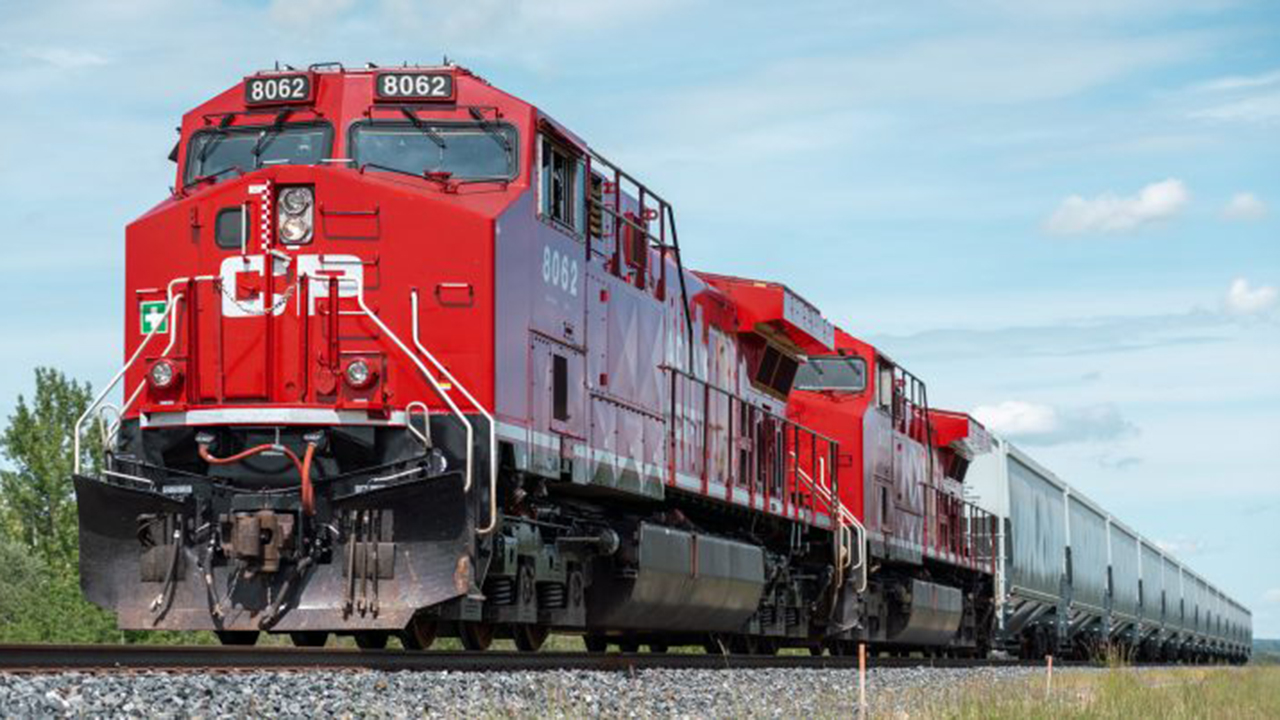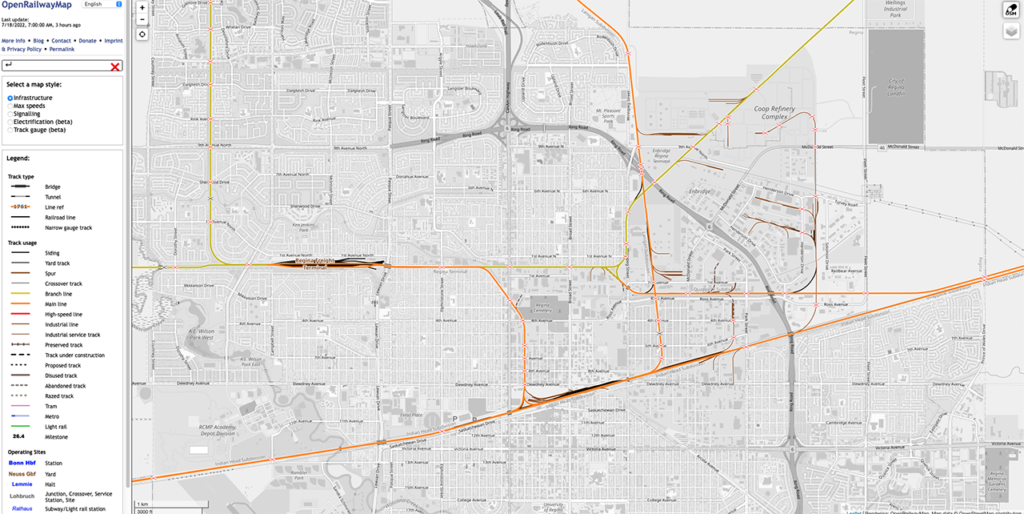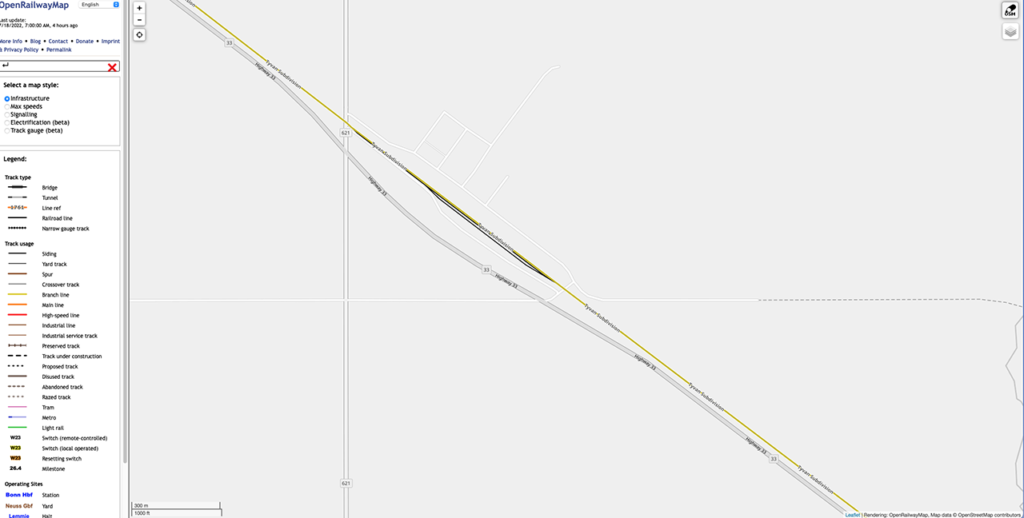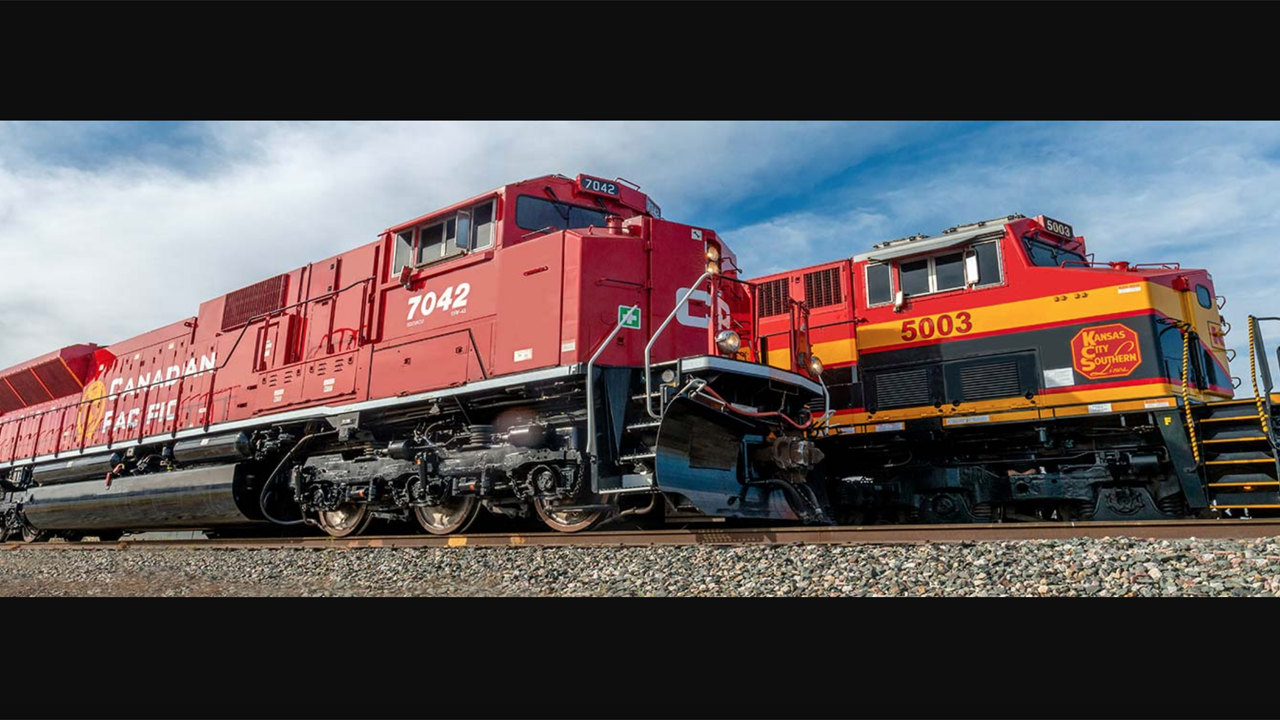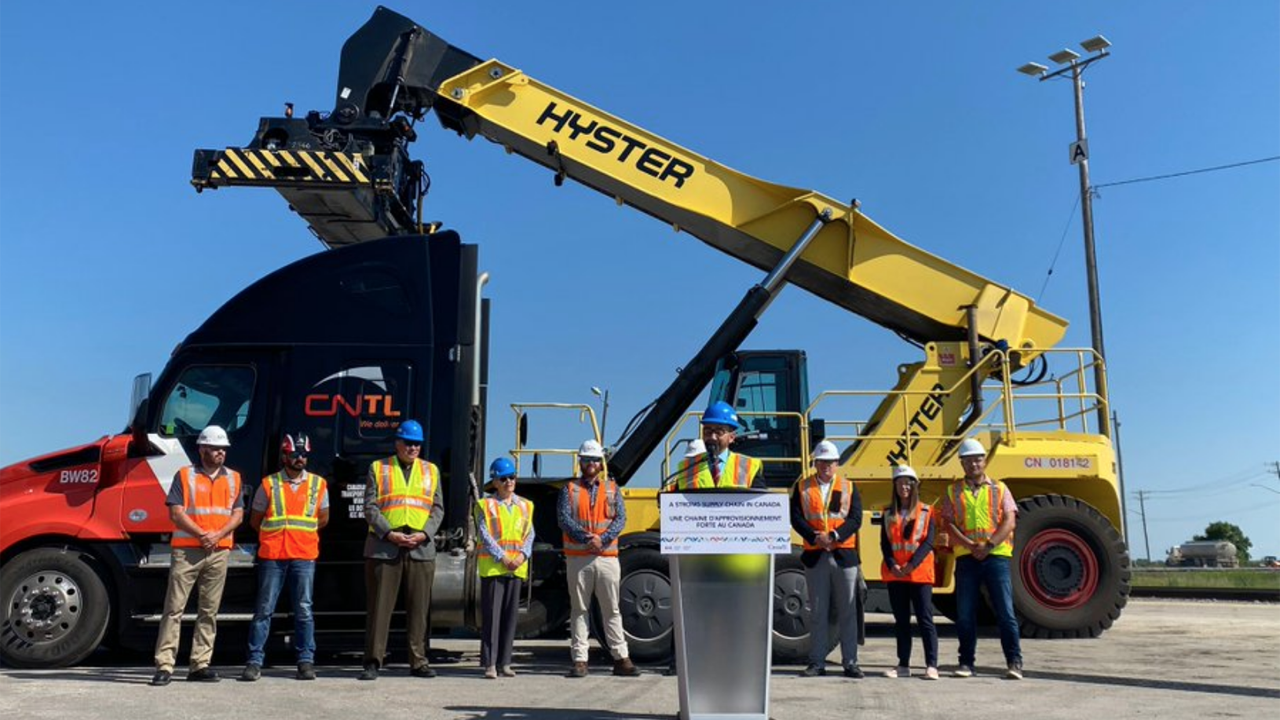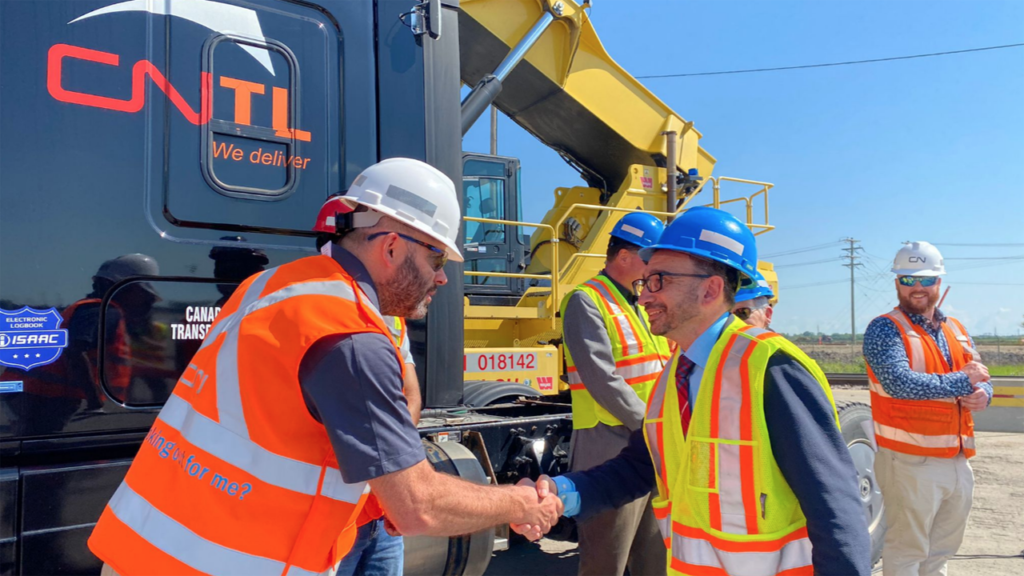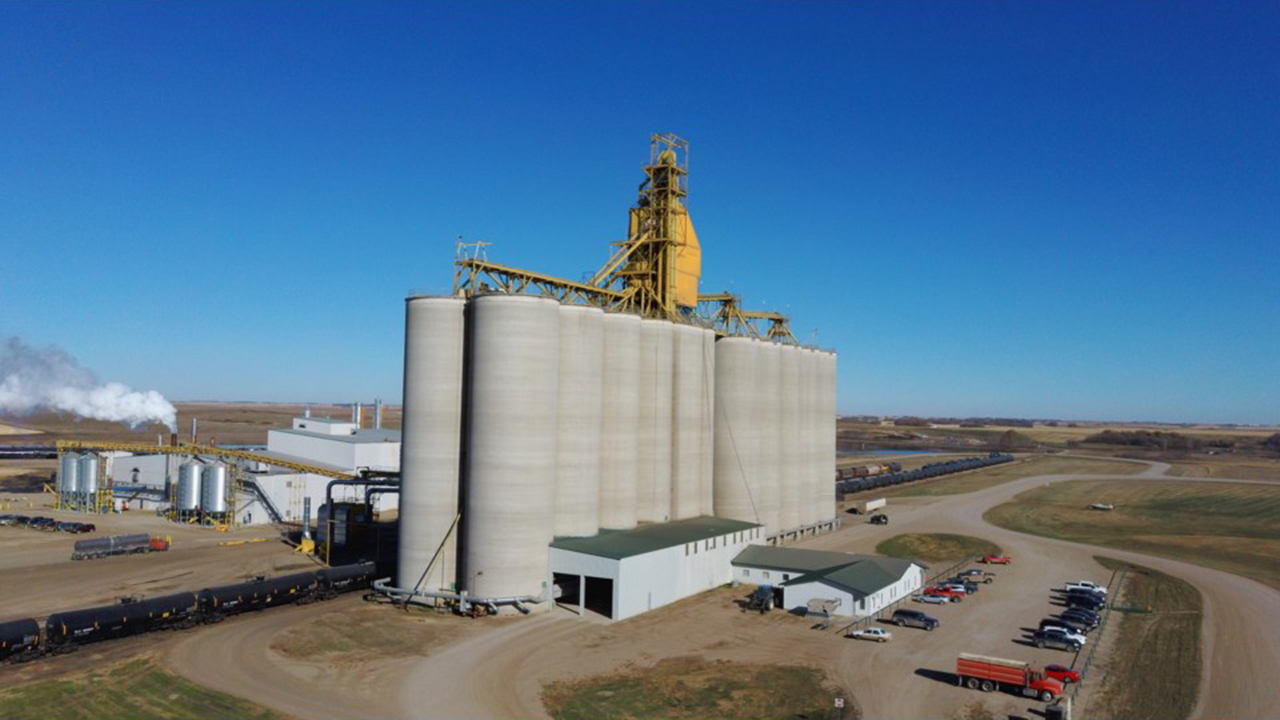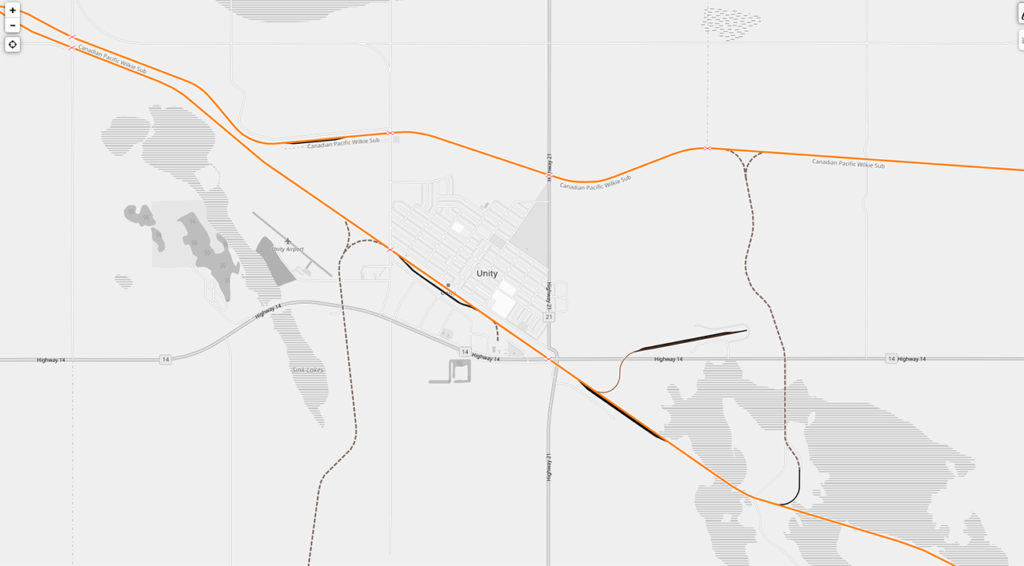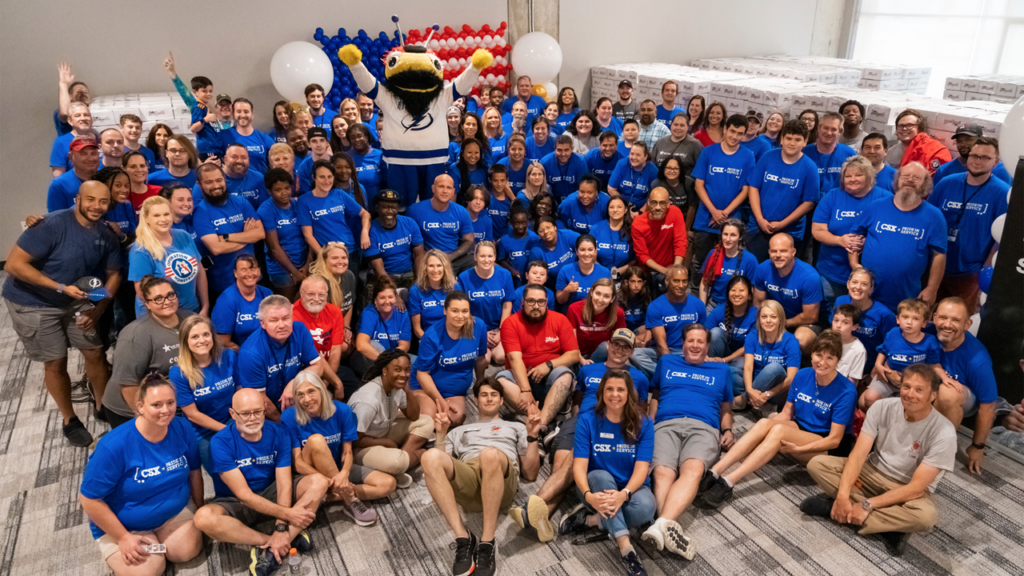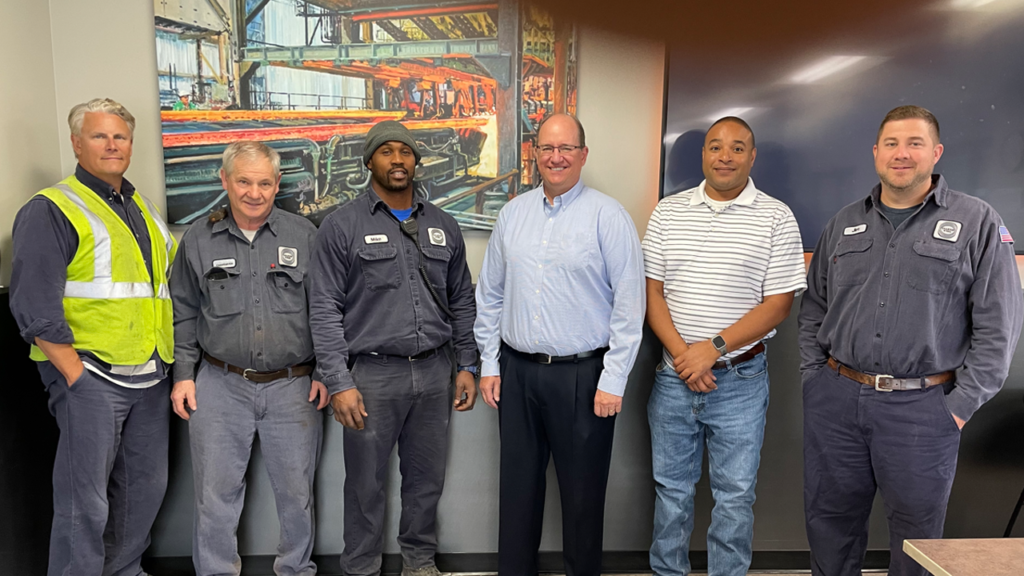AFL-CIO Transportation Trades Department President Greg Regan joins Yahoo Finance Live to weigh in on how the union contract negotiations with railroads are proceeding, the issues at stake including wages and benefits, and the potential for work stoppage.
Video Transcript
[MUSIC PLAYING]
BRIAN CHEUNG: Train operators and the workers that keep them going remain at odds in labor negotiations. All of that as freight demand remains high. The latest deadline of Monday passed without a resolution that raises concerns over a possible strike. Here's what Lance Fritz, the CEO of Union Pacific Railroad, one of the major railroad companies, had to say yesterday about current negotiations. Take a listen.
LANCE FRITZ: I wish we could have gotten an agreement earlier in the process, but the railroads and the union leadership are pretty far apart right now in terms of what we think is an appropriate settlement on wages. So what's going to happen now is the presidential emergency board is going to hear both sides. And then they're going to propose what they think is a reasonable agreement. Then we'll have 30 days to negotiate off that and reach agreement. I'm hopeful we will do that. If not, a strike or a lockout could occur.
BRIAN CHEUNG: Well, joining us with more on the union side of things, Greg Regan, AFL-CIO, Transportation Trades Department president, joins us live now. Appreciate you taking the time this morning. You heard what Union Pacific CEO said in that clip that we just played that it seems like there's still a lot of friction on both sides. Where do you feel the union stands on those negotiations, as the president starts to get involved?
GREG REGAN: Well, I think what Lance said is right. The sides are pretty far apart. And I think, in large part, it's because the railroads are not coming to the table with a reasonable proposal. We are looking at a situation reality right now where the railroads have made over $140 billion in pure profit since 2015. And during that same time, they've laid off over 45,000 employees.
So when you look at what they're expecting out of the current workforce and what the pure profits are making, we need to make sure that these workers are being paid what their work and what they're worth and what they're delivering for the economy and for these companies.
BRIAN CHEUNG: Well, Greg, I mean, on that point, Lance says that it is the wage bit of these negotiations that's kind of creating that chasm there. It can't just be a number, though, that you're trying to land on, right? What are other things that the union is flagging in terms of things they'd like to see the railroad companies address?
GREG REGAN: Well, certainly, healthcare benefits are another major component of this negotiation. At its core, what the presidential emergency board that Lance mentioned, what they're going to address are wages and benefits. There are, obviously, other issues that we care about here. There are work rules. There are attendance policies and things like that that need to be worked out. But right now, we're focused on wages and benefits, the core economic issues in any collective bargaining agreement.
AKIKO FUJITA: What are you willing to move on? I mean, these are negotiations, right? Obviously, it sounds like you don't think that the railroad side has really come to the table. But where's the compromise? Where is the union willing to move on?
GREG REGAN: Well, certainly, I think if you look at the opening proposals that both sides came with, I think the unions have moved quite a bit, actually. The railroads have not. So I'm looking forward to seeing what the presidential emergency board comes up with and what they recommend as a reasonable agreement and a resolution to this because, quite frankly, I think the facts are on our side here.
Just, if you look at the underlying economics, what they're offering, what they have offered what would be a net pay cut for our employees, for their employees, for our members, that is simply not acceptable when you look at the profits they're bringing in, the rate of inflation we have right now. These people are being asked to suffer while the corporate side are making money hand over fist and doing stock buybacks and all that stuff. Their employees are the ones delivering these profits. They deserve to have a fair and equitable share in this.
AKIKO FUJITA: These drawn out negotiations certainly have shined a light on all the supplies move using the country's rail system. What kind of disruptions are we talking about if this drags on?
GREG REGAN: Well, I think, certainly, we do have a spotlight. I think people are starting to understand that goods don't just show up on their store shelves. They don't just show up at their doorstep. People are moving all of this. And our supply chain is vital, especially when we saw during the pandemic, vital to making sure that our economy continued to move during that difficult time. These are truly essential workers.
So, and what we're seeing right now, the way the railroads are operating, just from a-- on their skeletal staffing system-- they've been mothballing equipment-- they're not functioning in a very good way right now. The agricultural community, the energy community, the chemical companies, they've all come and publicly said that the railroads are not performing up to the standards that they need.
And so if we actually want to fix our supply chain issues and start having-- building a more resilient and sustainable supply chain, it starts by giving these people a contract that they deserve. Then we can start hiring up. Then we can start expanding services and meeting what our economy demands, quite frankly.
So, you know, I don't-- I wouldn't focus on what the upcoming disruptions are. I think it's more important to focus on what the current disruptions are and the fact that we are not-- the railroads are not meeting the needs of the port system, of the shippers, of the agricultural community. And that needs to change. And we need to do it with-- by supporting the workers.
BRIAN CHEUNG: Greg, my understanding is that the president, having stepped into this, extended the period by which you have that cooling off, where you wouldn't strike now. 60 days from now, though, would you then go on strike to make that point clear to the companies here? Because that could further exacerbate the disruptions. But it could also give you a little bit more, I guess, leverage in those discussions.
GREG REGAN: Well, I'm hopeful that we do have a good recommendation that's something that can be the basis of a negotiated and ratified agreement on all sides. That's the goal that the unions have had from the beginning here. It's not about trying to prove a point or have a work stoppage for the sake of a work stoppage.
What we want right now is to make sure we get a good agreement. And hopefully, the PV, the recommendation will be the basis to achieve that. And we're going to work closely. We're going to be diligent and disciplined and make sure that we can deliver for our members.
BRIAN CHEUNG: Well, I guess the important thing, too, is also to remind our viewers that this is a negotiation that's been going on for 2 and 1/2 or three years now. So that further kind of kicks the can down the road. Could you see Congress getting involved now that the presidential order does give them the power to intervene in these negotiations if they have to?
GREG REGAN: That is certainly a possibility. And we would not want to be in that situation. Nobody wants Congress to have to resolve a contract dispute. But we're doing our best to inform people to make sure they understand what's at stake in this negotiation, what their role could be down the road.
Certainly, from our perspective, you made a really good point. It's been three years since we started this negotiation, which, by the way, was during the teeth of the pandemic. And these workers have not received a raise, not a single penny of a raise in that three-year period. And so right now, I think there is a basic fairness issue at stake here.
AKIKO FUJITA: AFL-CIO Transportation Trades Department President Greg Regan, it's good to talk to you today. Appreciate the time.
BLET Members Vote ‘Yes’ on Nationwide Strike Authorization
Dennis R. Pierce, National President, Brotherhood of Locomotive Engineers and Trainmen
Nearly 100% of Brotherhood of Locomotive Engineers and Trainmen members have voted in support of a nationwide strike, which BLET National President Dennis R. Pierce is calling “a showing of solidarity and unity.”
The National Mediation Board (NMB) on June 14 set in motion a 90-day-maximum time clock toward a national railroad shutdown. It released BLET and 11 other rail craft unions (bargaining in two coalitions collectively representing some 115,000 rail workers) from NMB-guided mediation with most Class I freight railroads and many smaller ones, ending attempts to negotiate, voluntarily, amendments to existing wage, benefits and work rules agreements.
This triggered a “cooling off period,” which is set to expire at 12:01 a.m. EDT on July 18, 2022. At that point, self-help is available to the parties, unless President Joe Biden appoints a Presidential Emergency Board (PEB) pursuant to Section 10 of the Railway Labor Act. A PEB would halt any strike or lockout by the parties, and would investigate and issue a report and recommendations concerning the dispute.
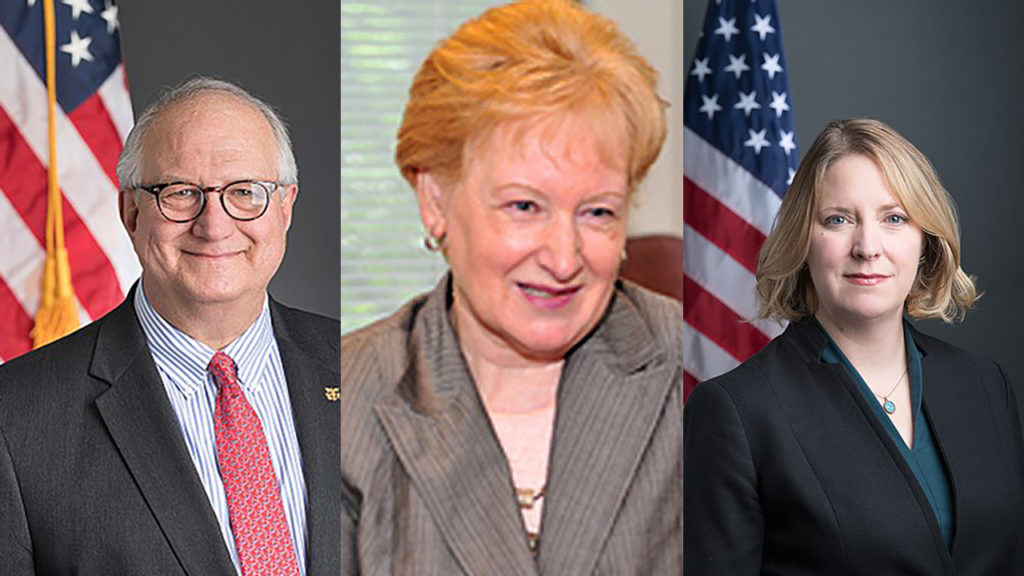
However, NMB ordered negotiators back to Washington on July 12 for a “public interest” session, according to a June 27 report by Railway Age Capitol Hill Contributing Editor Frank N. Wilner; the move, he said, was “a final effort to extract concessions leading to a voluntary agreement. Failing that, the NMB will recommend President Biden appoint a PEB.”
BLET’s Pierce, late on July 12, reported that 99.5% of the union’s “participating members voted to authorize a strike should such action become legal in the coming days, and become necessary to secure a contract worthy of their consideration.”
Ballots were mailed June 24 to more than 23,000 eligible members, “who are employed on the railroads where the dispute exists and where the BLET has representation rights for their craft.” They had until 10 a.m. EDT on July 12, to cast their votes. According to BLET, it was “a mandatory step required by the Brotherhood’s internal law as the Union approaches the point where self-help becomes a legal option to both labor and management.”
Pierce, in a statement released when the ballots were being mailed, emphasized that “authorization does not mean a strike will occur, nor does it mean that all railroads may be struck.”
He, too, voted to authorize the strike, which he addressed in a July 12 statement to members, which he titled, “BLET Strike Vote: The rest of the story.” Railway Age provides the full statement below, plus commentary by Capitol Hill Contributing Editor Frank N. Wilner.
‘BLET Strike Vote: The rest of the story’
By Dennis R. Pierce, BLET National President
“Today [July 12], the Brotherhood of Locomotive Engineers and Trainmen tallied the ballots cast in its first nationwide strike vote over national contract negotiations since 2011. In a showing of solidarity and unity, 99.5% of the participating members voted to authorize a strike should such action become legal in the coming days, and become necessary to secure a contract worthy of their consideration. Contrary to the self-serving propaganda being spread by the rail carriers, the BLET membership owes no one an apology for voting as they did. I too voted with the majority and I applaud them for doing it. But there is more to this story than just casting a vote in favor of striking.
“In the years preceding the pandemic, the majority of the nation’s Class I rail carriers adopted slash and burn operating plans with only one goal in mind; profits without regard to the health, safety, satisfaction or well-being of their employees, their customers or our Nation at large. To accomplish their goals, they furloughed or fired a third of their nationwide workforce, forcing the remaining employees to work more. They began running longer and longer trains, without regard for safety concerns, that continue to all but shut down the rail networks due to an infrastructure never designed to run these longer and heavier trains. As the post pandemic economy started to ramp up, they refused to adequately staff their operations, continually blaming their remaining employees for rail carrier actions that negatively impacted their shippers. Draconian attendance policies were implemented, forcing engineers and conductors to work day in and day out with no scheduled time off or be fired. These ridiculous policies forced thousands of employees out of the industry, either by resignation or termination, further compounding an already understaffed operation. And if anyone is close to being abused as much as the employees by this business model, it’s the shippers, or as they should be called, the rail industries’ customers.
“Most of this information has been in the news, but there is a reason that nothing is changing. This “employee and shipper be damned” business model accomplished the goal it set out to; it continues to make record profits even as the rest of the Nation’s economy struggles due to a supply chain crisis created in large part by the carriers’ business model. In short, the railroads used and continue to use their economic strength to steam roll their employees, their customers and the Nation, all for the sake of their bottom line, and it is clear that they have no intentions of changing.
“Now, let’s throw a national contract negotiation into this already toxic workplace. The BLET members who voted to strike this week have worked for incredibly profitable railroads for over three years without a wage increase. They were considered essential workers during the height of the pandemic, forced to work day in and day out or be fired, with no financial recognition for doing so. All the while, the rail carriers’ “profits over all else” mentality completely saturated our contract negotiations. Let’s be clear; in our third year of negotiations, the rail carriers have never made a contract proposal to our Union that their employees, our members, would accept. Not once.
“Conversely, the united rail unions, bargaining as coalitions, have made contract proposals that would improve the financial standing and quality of life of the hard-working Americans who make up our collective memberships. There is no fact-based argument that the rail carriers cannot afford the Union’s proposals nor do they even make such a claim. Rather, consumed by corporate greed that would make the robber barons of old blush, they just simply don’t want to share their record profits with their employees. Ironically, our proposals if adopted, would actually improve the workplace, improve the rail carriers’ ability to hire and adequately staff their operations and, in the end, improve the current railroad supply chain crisis that was created by railroad management.
“Instead, the rail carriers have stonewalled at the bargaining table, adding insult to injury with their workforce every day as inflation drives the cost of living through the roof. One railroad CEO called certain operating employees, who actually move the nation’s freight doing what have become thankless jobs, “unnecessary” in a public appearance. People off of the street are being offered thousands of dollars to hire on at the railroad with no experience, only to work alongside existing experienced employees who have not had a contract raise for three years. Rail carriers refuse to deliver cars on time every day of the week, all but creating their own “job action” as they shut down industry after industry without any concern.
“Today, the rail industry is running a full-blown media blitz asking for government intervention to save them from a possible legal job action by the employees that they have abused for years. Consider the hypocrisy in that. The railroads continue to tell the Surface Transportation Board, Department of Transportation and Federal Railroad Administration that the government should stay out of their failing business model despite shipper complaints. But when it comes to dealing with their own employees, they now seek government intervention rather than just make a contract offer that their employees would accept and be done with the bargaining round.
“The real bottom line is this. It is a sad, shameful day when employers treat their employees so poorly that those employees are forced to exercise their economic strength through a legal strike just to be treated fairly in the workplace. These contract negotiations should have been settled years ago, and in industries not governed by the Railway Labor Act, they more than likely would have been. The economic power of a legal strike is never to be abused or taken lightly, but the mere fact that it exists in other industries often compels those employers to negotiate fair contracts.
“It is obvious that the rail carriers are not similarly compelled; they count on and hide behind the provisions of the Railway Labor Act to save them from having to treat their employees fairly. An industry that generally hates government involvement now seeks just that by lobbying shippers and government seeking their intervention.
“In the end, the question of whether or not any of the rail industry’s Union-represented employees want to legally strike is secondary to what they truly want. They want a contract with meaningful wage increases and good benefits. They want jobs that give them the ability to have a life outside of work. To be clear, there would be no need for a strike vote if any of that had happened in these negotiations. The responsibility for the rail industry and our Union even being in this situation lies squarely on the rail carriers. They created the mess, and they have the power and financial means to fix it. It is sad that we may have to collectively go to the federal government to accomplish that, but rest assured that our Brotherhood is now prepared to take the next steps in the process, as we fight to reach a contract settlement that our membership will accept.
Wilner Weighs In

Commenting on the BLET President’s message is Railway Age Capitol Hill Contributing Editor Frank N. Wilner, author of “Understanding the Railway Labor Act,” and a former union and carrier official involved in rail collective bargaining since the 1970s:
“Dennis Pierce is perhaps the savviest labor negotiator in the rail industry today. He makes telling and accurate points, but he undermines his case by creating a ‘big lie’ he is selling his members. Pierce alleges that carriers ‘now seek government intervention rather than just make a contract offer that their employees would accept …’
“In fact, it is rail labor, since the start of negotiations in January 2020, that has pushed for a release from collective bargaining, angling for appointment from labor-friendly President Biden of a favorable Presidential Emergency Board (PEB)—with an assumed backstop of labor friendly Democrats holding House and Senate majorities.
“Labor refused to participate in virtual collective bargaining when the COVID pandemic prevented face-to-face negotiations. In January 2022, after making a take-it-or-leave-it 47% wage boost demand, and no increase in healthcare insurance premiums—frozen for nearly a decade while healthcare costs soared, and carriers paid 100% of premium increases—Pierce sought mediation assistance from the National Mediation Board (NMB). That proved a sham, because mediation barely began in mid-March when the Pierce-led labor bargaining coalition demanded release from mediation in hopes of political advantage through third-party intervention.
“Pierce gained that result under a questionable ruling by the NMB’s Democratic majority—questionable because a professional mediator was shoved aside before a full plate of complex issues even began to be explored under NMB guidance, making it perhaps the shortest mediation in NMB history. Moreover, both Democrats have organized labor backgrounds. Linda A. Puchala is a former president of the Association of Flight Attendants, while Deirdre Hamilton is a former attorney with the Teamsters Union, of which Pierce’s BLET is a division. Neither returned requests seeking comment as to what conversations they may have had with White House labor liaison Seth Harris—of public interest because NMB members do not report to the President and, by statute, the NMB’s decision-making is to be independent of the Executive Branch. Now we await appointment of a PEB.
“How a PEB consisting of neutral arbitrators will react to these events cannot be predicted. Labor has found itself before on the wrong side of what it expected to be a labor-friendly PEB, and labor’s friends in the Democratic Party—including the late Sen. Ted Kennedy (D-Mass.)—have turned on labor as well after labor rejected PEB recommendations and shut down the nation’s rail network with a work stoppage. Lawmakers do not take kindly to having to make difficult choices in election years.
“This is not to suggest that carrier management has clean hands—far from it. But if our Democratic institutions are to function as envisioned, those institutions and their processes must be respected. As we have quoted before—by former Democratic NMB member Robert O. Harris, who later was a well-respected arbitrator, ‘Welcome to the oldest established craps game in Washington. Like the suckers in ‘Guys and Dolls,’ you are risking your futures on the roll of the dice.’”
It is more than two years since the rail industry’s 12 labor unions and management (representing most Class I railroads and some smaller ones) commenced bargaining to amend contracts defining wages, benefits and work rules.
Although ratified agreements are retroactive to the Jan. 1, 2020 start of negotiations, labor’s rank-and-file are feeling the pinch of almost 9% price inflation over the past 12 months. Labor negotiators, however, rejected a cash advance to tide members over during the pendency of negotiations and are demanding nothing less than a 47% wage boost over five years. Rail employee compensation, including employer-paid healthcare insurance and retirement plan contributions, already exceeds that of 94% of American workers.
Management, while acknowledging recent price inflation, points to the previous two 12-month periods when price inflation was but 2.6% and 1.5%, with expectations it will again retreat in response to the Federal Reserve Board’s aggressive economy-cooling interest rate hikes. Also affecting the generosity of management’s offer are dramatic reductions in coal traffic and a growing threat to intermodal from advances in self-driving trucks and legislation allowing longer and heavier trucks.
Does the fault for failed contract talks lie with the Railway Labor Act (RLA), the National Mediation Board (NMB), labor negotiators or management? Let’s consider each.
Railway Labor Act
Passed by Congress in 1926 as the first law guaranteeing workers the right to organize, join unions and elect bargaining representatives, the RLA was intended as a manual of peace—that labor and management “jaw, jaw” rather than “war, war.”
Additionally, that rail labor contracts continue in force until periodically amended avoids the “no contract, no work” trap facing negotiators in other industries, and keeps paychecks flowing and trains operating.
If one grades the RLA on its ability to prevent economy-jolting rail work stoppages, it is an unmitigated success. Since World War II, just 12 days have been lost to nationwide rail stoppages, and none the past three decades.
A jolly wonderful reason is the RLA provides for compulsory and open-ended mediation to assure attentive and thorough consideration of issues; and, if necessary, non-binding settlement recommendations by experienced arbitrators serving on Presidential Emergency Boards (PEB). Should work stoppages still occur and Congress chooses to act with back-to-work legislation that determines contract amendments with finality, it has in hand advice from PEBs.
National Mediation Board

The RLA defines the NMB’s role, whose effectiveness—and that of PEBs—depends on stakeholder and public perceptions of processes and actions being neutral and unbiased.
A 2010 NMB-led conference of stakeholders, studying why positive perceptions were eroding, concluded that while mediation sometimes seemed “virtually endless”—as the Supreme Court observed in 1987—and demoralizing to the rank-and-file, the “variations and distinctions between the multiplicity of bargaining disputes” makes it impractical to establish hard time lines. What makes mediation effective is the NMB’s ability to accelerate or decelerate the process in response to good or bad faith bargaining by the parties.
The NMB earlier this month seemingly abandoned attentive and thorough consideration of issues, truncating to fewer than two months mediation involving 10 of the 12 rail unions representing a multiplicity of crafts and issues. Those unions didn’t seek NMB-guided mediation until January 2022, with the first session not held until mid-March.
Mediation had barely begun when an assigned and highly respected NMB staff mediator was shunted aside by the three-Board members who took charge of mediation. Two weeks later and over remonstrances of management and the Republican member, the NMB’s two Democratic members voted to declare, in record time, a bargaining impasse leading to a now-expected creation of a PEB.
Another most notable recommendation of that 2010 NMB-led conference was that “Board-member involvement [in mediation] be managed in a way to avoid undermining of the authority of the mediator at the bargaining table or creating the perception of ‘deals’ being made by a party going directly to a Board member.”
Labor

It is myth that collective bargaining in the rail industry is conducted by labor negotiators concerned only with their members’ self-interest. Often, internal conflicts exist.
Consider the two largest rail unions, which have a history of behaving as scorpions in a bottle. Representing 54% of the 115,000 rail workers affected by this round of bargaining, the two are the Transportation Division of the International Association of Sheet Metal, Air, Rail and Transportation Workers (SMART-TD)—formerly United Transportation Union (UTU), which represents conductors and other ground service workers—and the Brotherhood of Locomotive Engineers and Trainmen (BLET).

On seven occasions in past decades, the two unions failed in attempts to merge into a single union representing train and engine workers. The UTU finally affiliated with a sheet metal workers union, while the BLE affiliated with the Teamsters, added “Trainmen” to its name to become BLET, and commenced poaching conductors from its rival, playing on anticipation of their promotion to engineer.
The BLET also signed an agreement with BNSF acknowledging a future of one-person train crews with a higher-paid engineer. Some BLET senior officers even advocated that where two crew members are required, the second be a BLET represented “assistant engineer” rather than a SMART-TD represented conductor.
As for SMART-TD, its predecessor UTU signed a national agreement embracing, for use in switch yards, job-saving remote-control technology that cost thousands of rival engineer jobs.
The UTU also cajoled UTU-friendly lawmakers to insert, sub rosa, in a non-transportation-related military aid bill, a legislative rider requiring the NMB to classify engineers and conductors as a single craft. The UTU objective was a winner-take-all representation election as the UTU had the greater number of members. The plot unraveled when the engineers’ union’s legislative department discovered the rider’s existence.
Although BLET and SMART-TD now sit side-by-side at the bargaining table with eight smaller unions, the harmony has more to do with mutual distrust and concern as to who might agree to what if they bargained individually.
Then there is internal union tension of preserving dues revenue while simultaneously representing member interests that might be better served through job-reducing agreements providing career-long income protection.
As railroads consolidated, improved productivity and reduced headcounts, rail labor unions—even when merging with larger non-rail labor organizations—retained a top-heavy administrative structure little changed from when they represented two- and three-times as many rail workers. What is best for the union is not always best for the union member, and vice versa.
In 2014, for example, BNSF offered conductors a deal seeming to check every self-interest box—a collaboration by management and a forward-looking SMART-TD general committee of adjustment.
In exchange for allowing BNSF to operate trains on Positive Train Control (PTC) equipped routes—those of legacy railroads Chicago, Burlington & Quincy, Great Northern, Northern Pacific, and St. Louis-San Francisco—conductors would be reassigned to ground service with more predictable hours and contract language memorializing, for the first time, that they are in charge of train operation. (PTC is a $15 billion investment to eliminate human-factor-caused train accidents.) Also included were wage hikes and income protection until retirement.
Top officers of SMART-TD lobbied the 6,000 affected members employed by BNSF to reject the agreement negotiated by their general committee of adjustment, concerned with losing dues revenue when protected conductors retired and were not replaced. Members did reject the offer, with many now expressing second thoughts when discussing how working conditions—by far the most significant complaint of train and engine workers—could have improved.
MANAGEMENT
Management also has internal conflicts hindering efficient bargaining outcomes.

As major railroads consolidated into two duopolies separated roughly by the Mississippi River, differences defined them. Those in the West operated longer-haul trains with fewer yard operations—consistent with market geography—versus shorter-haul, yard-prolific railroads in the East. One-size-fits-all national agreements with standardized wages and work rules became problematic. During this round of bargaining, for example, CSX broke from national handling to negotiate wages and work rules separately with BLET and SMART-TD.
Conflicts also exist between railroads and their investors, whose priority is short-term profits. Former BNSF CEO Matt Rose was heard to say that because BNSF is not publicly traded—it being 100% owned by conglomerate holding company Berkshire Hathaway (B-H)—BNSF is able to focus more on meeting customer wants than fulfilling Wall Street demands. B-H Chairman Warren Buffett said earlier in June that B-H selects acquisitions based on “long-term business performance and not because we view them as vehicles for timely market moves.”
As for publicly traded railroads, optics are troubling when management seeks to cap employee compensation while buying back billions of dollars in stock to improve share price. An example was offered recently by New York Timeseconomics writer David Leonhardt in a critique of General Electric (GE) and its former CEO Jack Welch.

“For decades after World War II, wrote Leonhardt, “big American companies bent over backward to distribute their profits widely,” with GE “proudly” talking about “how much it was paying its workers.” But under Welch, GE “unleashed a wave of mass layoffs and factory closures that other companies followed. Profits began flowing not back to workers in the form of higher wages, but to big investors in the form of stock buybacks. But in the long run, that approach doomed GE to failure. So, while Welchism can increase profits in the short-term, the long-term consequences are almost always disastrous for workers, investors and the company itself,” wrote Leonhardt.
Former Association of American Railroads economist and retired STB chief economist William F. Huneke told Railway Age, “American companies need to shift from financial manipulation for short-term stock market gains and focus on building a company franchise. Railroads should relearn the lessons taught by J. Edgar Thompson, who built the Pennsylvania Railroad into America’s premier managerial and technology innovator during America’s Industrial Revolution.”
NEXT STEPS
The NMB has ordered negotiators back to Washington July 12 for a “public interest” session in a final effort to extract concessions leading to a voluntary agreement. Failing that, the NMB will recommend President Biden appoint a PEB. While the NMB provides a list of qualified neutral arbitrators, the White House is under no obligation to name those recommended. Failure to do so would be a red flag—indeed, a bloody shirt of distrust that would only further erode confidence in NMB and PEB neutrality.
Once a PEB is in place, labor and management destinies belong to a third-party, with the 1991 words of former NMB member, and then neutral arbitrator, Robert O. Harris still resonating: When PEBs and Congress are chosen to settle rail labor contract disputes, “welcome to the oldest established craps game in Washington. Like the suckers in Guys and Dolls, you are risking your futures on the roll of the dice.”

Railway Age Capitol Hill Contributing Editor Frank N. Wilner, with undergraduate and graduate degrees in economics and labor relations and with five decades of rail industry experience, including on both sides of the negotiating table, is author of “Understanding the Railway Labor Act,” published by Railway Age sister company Simmons-Boardman Books.
NYMTA: Labor Problems at Kawasaki Nebraska Plant Delaying Deliveries
(UPDATED June 30)
Written by Carolina Worrell, Senior EditorIn 2018, the MTA signed a $1.75 billion contract with Kawasaki for 535 R211 subway cars.
According to New York Metropolitan Transportation Authority (MTA) officials, labor shortages and mismanagement at a Nebraska plant where Kawasaki railcars set to replace aging ones on New York City Transit’s subway and on the Long Island Rail Road (LIRR) are causing a delivery delay of at least 17 months, the Daily News reported on June 27.
In 2018, the MTA signed a $1.75 billion contract with Kawasaki for 535 R211 subway cars needed to replace NYCT 1960s and 1970s-era cars. The R211s were scheduled to arrive in July 2023, but ongoing problems, including a labor shortage, have pushed that arrival date to January 2025, with delivery at risk of being pushed another nine months, according to a consultant for the MTA. So far, only one five-car trainset has been delivered to the MTA for subway testing—and those arrived a year late.
Additionally, Kawasaki is behind schedule on a $734 million contract with LIRR to deliver 202 M-9s that will replace cars built in the 1980s and operate new East Side Access (ESA, renamed Grand Central Madison) service, which is intended to bring LIRR service into the new terminal beneath Grand Central Terminal by December 2022. According to MTA officials, 132 M-9s have been delivered, but the remaining 70 are not scheduled to arrive until September 2023.
MTA officials said the delays with the M-9s won’t affect the LIRR’s plans to launch Grand Central Madison service in December, but the R211 delays do mean longer wait times for upgrades to the legacy signaling system on the A Line to CBTC (communications-based train control). CBTC is expected to be operational on the local (C and E Line) tracks along that stretch by 2025, said MTA Chief Development Officer Jamie Torres-Springer.
CBTC onboard equipment is included in the R211 design. Contractors have begun to install the wayside equipment between the Columbus Circle and High St. stations on the A, C and E lines, but would have to retrofit older rolling stock to enable its use. Such retrofits are not in the scope of work.
Delivery delays were previously blamed solely on supply chain problems caused by the COVID-19 pandemic, but MTA officials are now pointing to a “labor catastrophe” at Kawasaki’s Lincoln, Neb., plant as the reason behind the delays. Joseph Devito, MTA’s independent engineering consultant, said that Kawasaki’s struggle to retain workers began even before the pandemic.
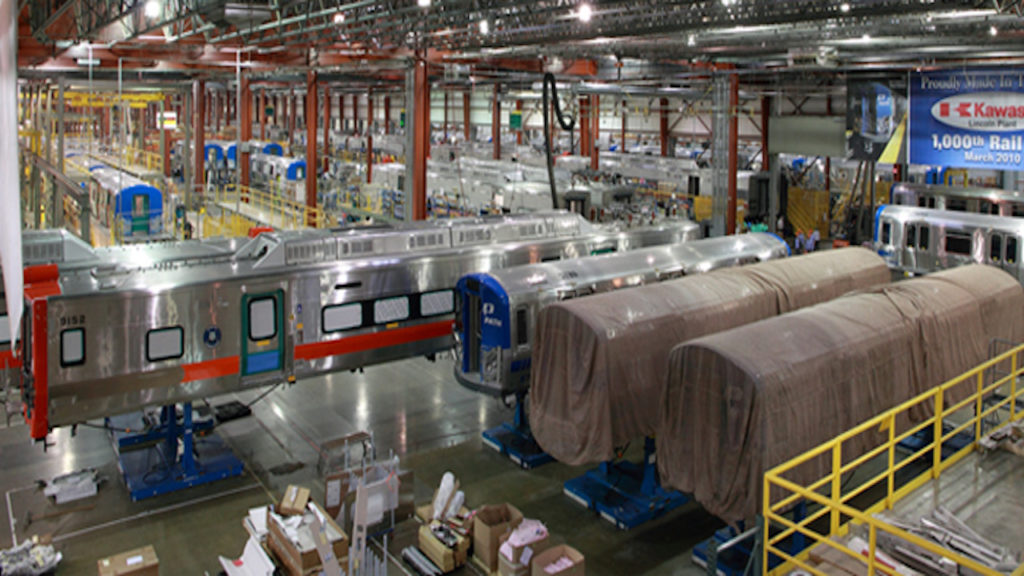
“The people that would work, they would show up for a week, and then they would disappear,” said LIRR Head of Rolling Stock Jim Allen during an MTA committee meeting. “That started a real systemic problem.”
NYCT Chief Mechanical Officer Siu Ling Ko added that for a long time, Kawasaki was losing about 45 of its Nebraska employees monthly—“a high turnover rate for an operation of about 430 people.”
R211 carbodies and several subassemblies are built in the Nebraska plant, with final assembly at Kawasaki’s Yonkers, N.Y. plant, neither of which are unionized, according to MTA officials.
“The shoddy oversight by Kawasaki managers has forced MTA to babysit the company,” Allen said. “Unfortunately, we have found that Kawasaki requires constant [MTA] oversight and supervision over its work.”
Despite delivery delays, the MTA said it is necessary to exercise an option for an additional 640 211s from Kawasaki later this year because only two companies—Kawasaki and Alstom—build subway cars for the MTA. Alstom acquired Bombardier; Hundai Rotem pulled out of the U.S. market, and Siemens Mobility thus far has not expanded the scope of its North American product line to include rapid transit cars.
“The universe of competent, qualified car builders that are in the U.S. are down to two,” said MTA Chairman Janno Lieber. “We’re all very mindful of some of those consequences. What we’re trying to do is help Kawasaki get back on the straight and narrow.”
Kawasaki Rebuttal
Kawasaki officials countered that MTA’s comments in the Daily News report stating labor issues at its plant in Lincoln are causing delays in the delivery of railcars to New York City are “not true,” adding that the company meets with all of its customers to provide status updates and recently hosted MTA officials, the Lincoln Journal Star reported on June 29.
”Last week, we hosted NYCT members at our facility and we successfully completed the first car review for the R211T open gangway subway cars, which is a large milestone in the progress of the project,” said Jason Hellbusch, corporate director of administration for Kawasaki Motors Manufacturing Corp. U.S.A., in an emailed statement. ”Joint understanding is key progress, and during this last visit by NYCT, we provided a detailed update regarding status and progress of the project, which included supply chain and manpower status.”
Hellbusch added that the Daily News article, published on June 27, does “correctly highlight that a major reason for delays has been supply chain issues,” but that Kawasaki takes exception to the comment regarding labor problems. “We currently have sufficient manpower for all projects in our facility and we continue to hire personnel as our production rate increases.”
Hellbusch also acknowledged that, like many companies right now, Kawasaki faces challenges finding enough workers in the current labor market. According to the Lincoln Star Journal, Nebraska‘s 1.9% unemployment rate in May was tied for lowest in the country, while Lincoln’s metropolitan area unemployment rate is among the 20 lowest in the country.
In July 2020, Kawasaki announced an expansion requiring it to hire 550 new employees, partially driven by the startup of the R211 contract.
According to Hellbusch, Kawasaki is “committed to fulfilling its contracts with the MTA, and the agency appears committed to the company, despite the quotes from officials.”
